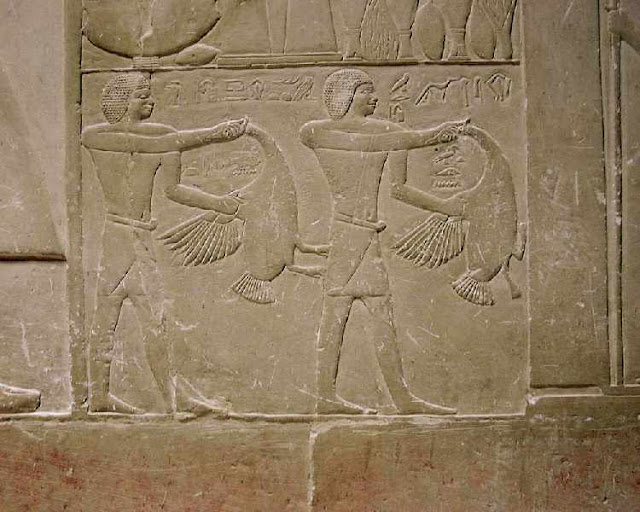
three rows of three servants (only the lower two are complete) bearing offering.
 The scene is that of the punishment of village leaders for the non payment of taxes. These headmen have been brought before local tax officials and flogged, the whipping post being shown at the right end of the scene.
The scene is that of the punishment of village leaders for the non payment of taxes. These headmen have been brought before local tax officials and flogged, the whipping post being shown at the right end of the scene.
Scribes located at the left end of the scene record the evidence, . Everyone in the scene is named and their official titles given, the wrong-doers will be remembered for eternity.
The next section of the wall shows Mereruka, in an ankle length dress, accompanied by his wife (at a much small scale, behind him). They look north, towards a scene where mortuary priests (on several sub-registers) offer food before statues of Mereruka . Almost the whole of the lower two registers have survived. Just behind the statues is the entry to chamber A6.
On the final decorated section of this wall, at the north end, Mereruka again stands facing the entry to chamber A6. The smaller image of his wife stands behind him ).


Comments
Post a Comment